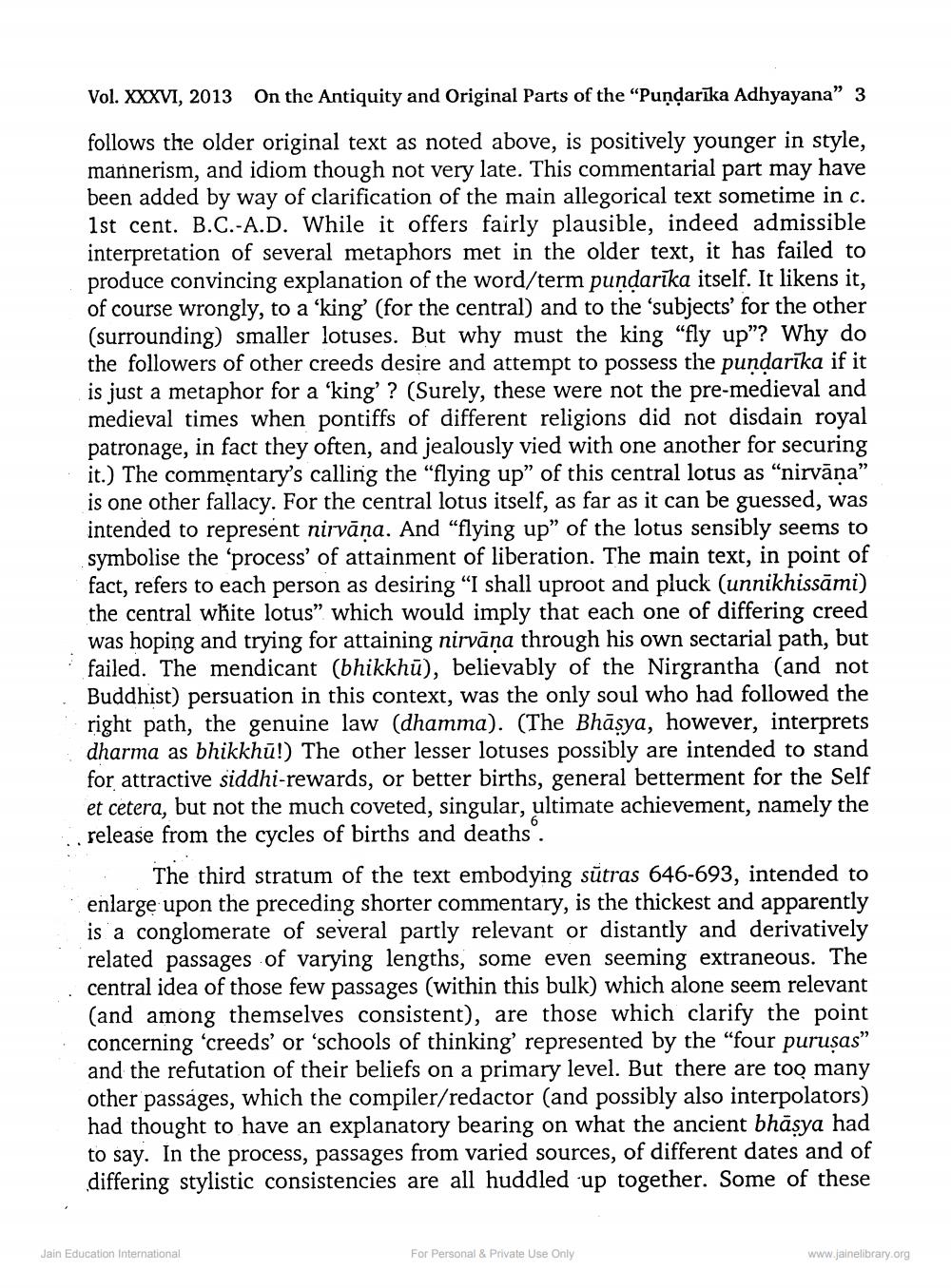________________
Vol. XXXVI, 2013 On the Antiquity and Original Parts of the "Pundarīka Adhyayana" 3
follows the older original text as noted above, is positively younger in style, mannerism, and idiom though not very late. This commentarial part may have been added by way of clarification of the main allegorical text sometime in c. 1st cent. B.C.-A.D. While it offers fairly plausible, indeed admissible interpretation of several metaphors met in the older text, it has failed to produce convincing explanation of the word/term pundarīka itself. It likens it, of course wrongly, to a 'king' (for the central) and to the subjects' for the other (surrounding) smaller lotuses. But why must the king “fly up"? Why do the followers of other creeds desire and attempt to possess the pundarīka if it is just a metaphor for a 'king'? (Surely, these were not the pre-medieval and medieval times when pontiffs of different religions did not disdain royal patronage, in fact they often, and jealously vied with one another for securing it.) The commentary's calling the “flying up" of this central lotus as “nirvāna" is one other fallacy. For the central lotus itself, as far as it can be guessed, was intended to represent nirvāna. And “flying up” of the lotus sensibly seems to symbolise the process of attainment of liberation. The main text, in point of
refers to each person as desiring "I shall uproot and pluck (unnikhissāmi) the central white lotus” which would imply that each one of differing creed was hoping and trying for attaining nirvana through his own sectarial path, but failed. The mendicant (bhikkhū), believably of the Nirgrantha (and not Buddhist) persuation in this context, was the only soul who had followed the right path, the genuine law (dhamma). (The Bhāsya, however, inter dharma as bhikkhū!) The other lesser lotuses possibly are intended to stand for attractive siddhi-rewards, or better births, general betterment for the Self et cetera, but not the much coveted, singular, ultimate achievement, namely the release from the cycles of births and deaths. . The third stratum of the text embodying sūtras 646-693, intended to enlarge upon the preceding shorter commentary, is the thickest and apparently is a conglomerate of several partly relevant or distantly and derivatively related passages of varying lengths, some even seeming extraneous. The central idea of those few passages (within this bulk) which alone seem relevant (and among themselves consistent), are those which clarify the point concerning 'creeds' or 'schools of thinking' represented by the “four puruṣas” and the refutation of their beliefs on a primary level. But there are too many other passages, which the compiler/redactor (and possibly also interpolators) had thought to have an explanatory bearing on what the ancient bhāsya had to say. In the process, passages from varied sources, of different dates and of differing stylistic consistencies are all huddled up together. Some of these
Jain Education International
For Personal & Private Use Only
www.jainelibrary.org




